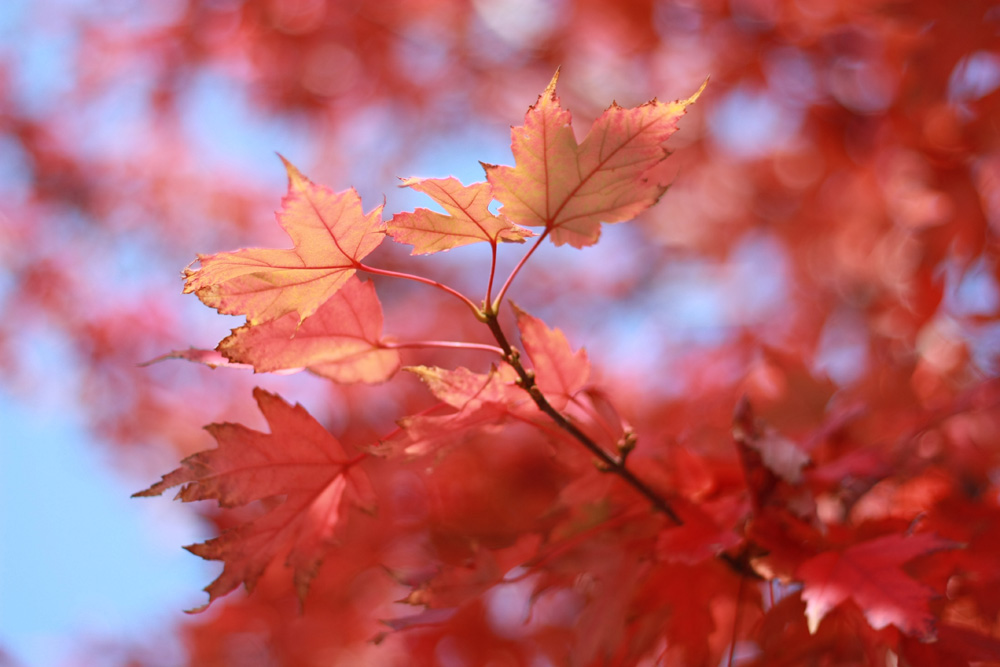Acer campestre
Common Name:
Field maple or Hedge maple

General information:
Simon and Shuster’s guide rates this tree as very easy to cultivate as bonsai. Like the Montpelier maple, the lobes of its leaves are obtuse, otherwise uncommon in maples. Its branches don’t seem to ramify as finely as other maples. It is a pleasing display tree in autumn, with buttercup yellow leaves. In the wild, the tree grows to 30 to 35 ft., but it grows slowly. A dwarf version, “Compactum,” only grows to 6 ft. and is commonly used for hedges. The most desirable cultivar is A. campestre ‘Compacta,’ a dwarf variety with leaves half the size of the species. Hedge Maple is usually low-branched with a rounded form, but there is considerable variability from one tree to the next. The branches are slender and branch profusely, lending a fine texture to the landscape particularly during winter.
Family:
Aceraceae
Lighting:
Unlike most maples, the field maple responds well to direct sunlight.
Temperature:
Hardy in zones 5-8. Small bonsai should be frost protected in winter.
Watering:
Moderate, although if kept in full sun, care must be taken to insure that the soil never dries out completely. Reduce watering in winter, but keep soil evenly moist.
Feeding:
Every two weeks in summer, using a standard bonsai food or half- strength plant food. Time-released pellets are also an option.
Pruning and wiring:
The field maple is easy to style by judicious pruning, as the scars heal quickly and well. It is necessary to prune often to avoid long internodes. Buds back excellently. Wiring should be done on newly hardened branches, as older, thicker branches tend to become stiff. The field maple responds well to a yearly leaf pruning in June, and responds best to wiring if done directly after leaf pruning. With diligent pruning, the leaves can be reduced to below an inch. For medium to large bonsai, this tree can be field grown to reach trunk diameters of two inches or larger.
Propagation:
From seed, after a three month cold treatment, and also from softwood cuttings or air-layering.
Repotting:
The field maple is a fast growing tree, and should be repotted at least every two years. Repot in spring, before bud burst, in basic bonsai soil. Soil tolerances includes: clay; loam; sand; acidic; alkaline; well-drained
Pests and diseases:
Pests:
Leaf stalk borer and petiole-borer cause the same type of injury. Both insects bore into the leaf stalk just below the leaf blade. The leaf stalk shrivels, turns black, and the leaf blade falls off. The leaf drop may appear heavy but serious injury to a healthy tree is rare. Aphids infest maples, usually Norway maple, and may be numerous at times. High populations can cause leaf drop. Another sign of heavy aphid infestation is honey dew on lower leaves and objects beneath the tree. Aphids are controlled by spraying or they may be left alone. If not sprayed, predatory insects will usually bring the aphid population under control. Scales are an occasional problem on maples. Perhaps the most common is cottony maple scale. The insect forms a cottony mass on the lower sides of branches. Scales are controlled with horticultural oil sprays. Scales may also be controlled with other well-timed sprays to kill the crawlers. If borers become a problem it is an indication the tree is not growing well. Controlling borers involves keeping trees healthy. Chemical controls of existing infestations are more difficult. Proper control involves identification of the borer infesting the tree then applying insecticides at the proper time.
Diseases:
Verticillium wilt symptoms are wilting and death of branches. Infected sapwood will be stained a dark or olive green but staining can’t always be found. If staining can not be found do not assume the problem is not verticillium wilt. Severely infected trees probably can’t be saved. Lightly infected trees showing only a few wilted branches may be pulled through. Fertilize and prune lightly infected trees. This treatment will not cure the problem but may allow the tree to outgrow the infection. Girdling roots will cause symptoms which mimic verticillium wilt. Tar spot and a variety of leaf spots cause some concern among homeowners but are rarely serious enough for control.
Bibliography:
The Simon and Schuster Guide “Complete Book of Bonsai,” by Tomlinson “Miniature Bonsai” by Gustafson
“Bonsai” by Resnick
USDA Fact Sheet ST-10
Compiled by Sabrina Caine Edited by Thomas L. Zane
